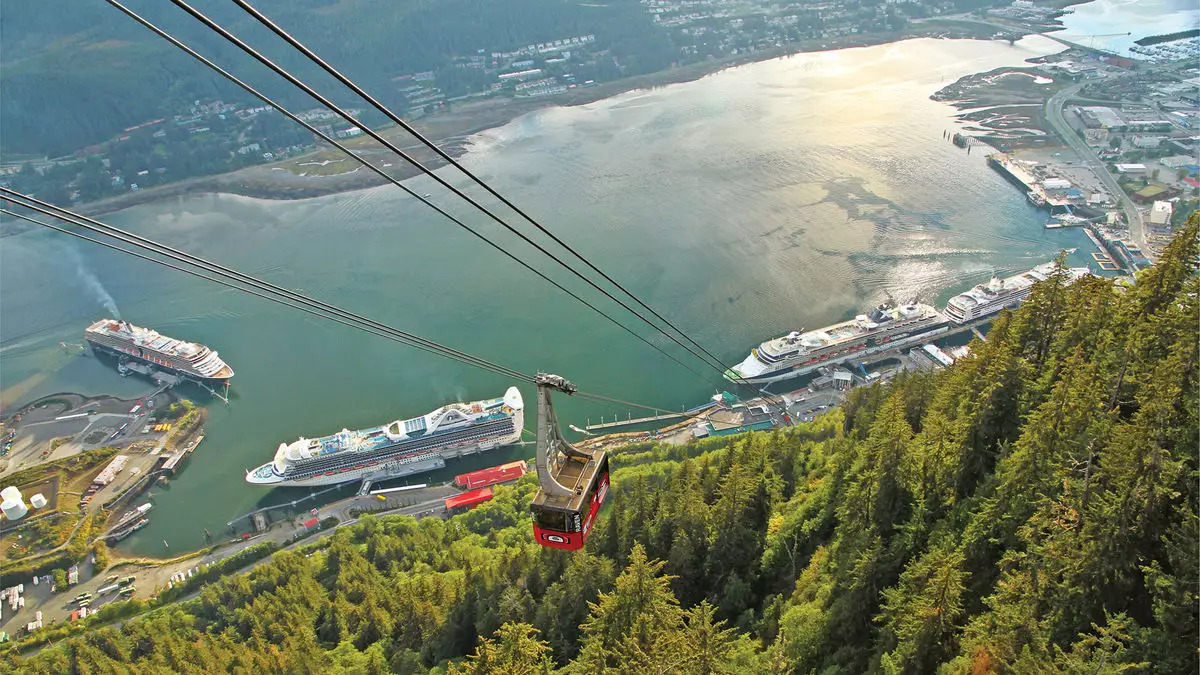Alaska’s cruise industry presents a study in contrasts, where certain ports find themselves keenly welcoming an influx of cruise tourists while others express concern over its environmental and social impacts. This divergence raises important questions about the sustainability of cruise tourism in the region. For instance, Russell Dick, CEO of Huna Totem Corp., voiced his dissatisfaction with the perception that the industry might retreat from Alaska due to opposition from some communities. He emphasized that the sentiments of southeastern Alaskans are not monolithic; many towns and regions are hungry for the economic benefits that cruise tourism can offer.
This is starkly illustrated by developments at Icy Strait Point, a port complex launched by Huna Totem two decades ago. The 32,000-acre site is designed to merge the stunning wilderness of Alaska with attractions like bear-watching tours and an impressive zipline experience, setting a template for how ports can cater to a growing tourist demand while preserving natural beauty. Furthermore, partnerships with major cruise lines have resulted in additional ports of call becoming operational, including a new facility in Whittier, developed in conjunction with Norwegian Cruise Line, set to enhance the flow of tourists into the region.
As cruise lines consider their routes, the focus may need to shift from popular ports like Juneau to lesser-known destinations that could provide similar or even enhanced experiences for travelers. Huna Totem’s Dick insists that a successful tourism strategy should showcase the diverse attractions of various Alaskan ports beyond just the capital city. This aligns with insights from Robert Morgenstern, Carnival Corp.’s senior vice president of Alaska operations, who admits that while Juneau has served as a primary port, logistical constraints mean cruise lines must explore alternatives.
Morgenstern asserts that accommodating caps on passenger capacity in Juneau opens the door for cruise lines to experiment with longer itineraries, allowing repeat visitors to experience regions they missed during their initial trips. This offers a chance to redistribute tourism’s economic benefits and showcase regions that might have previously flown under the radar.
The economic ramifications of cruise tourism become even more pronounced when considering the dwindling prospects in traditional industries such as timber and fishing in many Alaskan communities. This context elucidates why ports and adjoining communities are proactively seeking to enhance their appeal to cruise ships. The optimistic tone from Morgenstern highlights a promising outlook, whereby communities throughout Alaska can benefit economically from increased tourism if marketed correctly.
Despite the negative sentiments expressed by certain communities, it’s important to realize that not all ports share the same view. For instance, Prince Rupert in British Columbia is rapidly evolving its offerings with additional shore excursions, striving to entice cruise visitors seeking memorable experiences off-ship. Similarly, Wrangell is gaining attention as a potential destination, with cruise lines eyeing its viability for future itineraries.
In South Central Alaska, the climate for increasing cruise traffic is markedly different. Julie Saupe, CEO of Visit Anchorage, points out that the region’s size makes it less vulnerable to the overwhelming capacity pressures faced by smaller communities during peak cruise days. With transport routes fanning out across multiple ports, the area effectively cascades the influx of visitors, mitigating the severe consequences of overcrowding.
As sentiments grow increasingly divided regarding the long-term sustainability of cruise tourism, it is crucial for industry leaders and local stakeholders to engage in constructive dialogue. Collaboration may yield a balanced approach that honors the needs and desires of local communities while acknowledging the economic importance of tourist dollars.
Alaska’s cruise industry stands at a crossroads, navigating the delicate balance between enhancing economic opportunities and addressing community concerns. The ongoing dialogue about the future of cruise tourism must remain proactive, aiming for solutions that can enrich local economies without compromising the pristine environments that make Alaska a unique travel destination.

